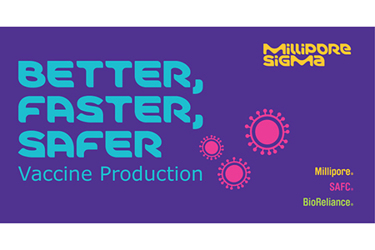How Pandemics And Outbreaks Have Influenced The Adoption Of Single-Use Vaccine Manufacturing
By Anissa Boumlic-Courtade, Ph.D., Head of Global Vaccine Segment, Bioprocessing

In just the last decade, infectious disease experts, public health organizations, governments and the biopharmaceutical industry have had to mobilize quickly in response to outbreaks and pandemics of H1N1, Influenza, Ebola, MERS, Zika and now SARS-Cov2 (Covid-19). While therapeutics are an immediate need, vaccines are the ultimate response in the fight against emerging infectious diseases. Unfortunately, vaccine development typically requires many years, and manufacturing large doses in an emergency remains a significant challenge. Preparing manufacturing plants to make a new vaccine can cost anywhere from $50 million to $700 million, according to a 2017 paper in Vaccine.i
To reduce the risk of such a major investment, biopharmaceutical companies typically wait until a vaccine is in the advanced stages of testing, with promising results, before starting to manufacture it in large quantities. This conventional development strategy compresses during a pandemic. Bruce Gellin, president of global immunization at the Sabin Vaccine Institute noted in a Wall Street Journal article that “in a pandemic, you can’t wait to start making your investment in the manufacturing until you’re sure you have a product.”ii
During a pandemic, time is of the essence, and the need to move quickly drives important innovations in vaccine development and manufacturing. These advances help to compress the time from bench to bedside and include increased flexibility in manufacturing through adoption of single-use technologies, capacity mitigation and use of novel adjuvants and platforms such as DNA and RNA vaccines.
This rapid pace is exemplified by Moderna’s mRNA-based SARS-CoV-2 and CanSino’s adenovirus-based vaccine candidates which entered Phase 1 clinical trials less than ten weeks after the first genetic sequences of the virus were released. Despite that, there are still many questions about the capacity to produce Covid-19 vaccines at a global scale.
This white paper explores the impact of recent outbreaks and pandemics on the advancement of manufacturing technologies that have helped accelerate and improve our response to subsequent emerging biological threats and how vaccine manufacturing must evolve to increase global capacity and pandemic preparedness.
Get unlimited access to:
Enter your credentials below to log in. Not yet a member of Bioprocess Online? Subscribe today.
